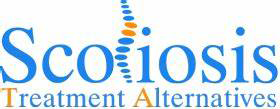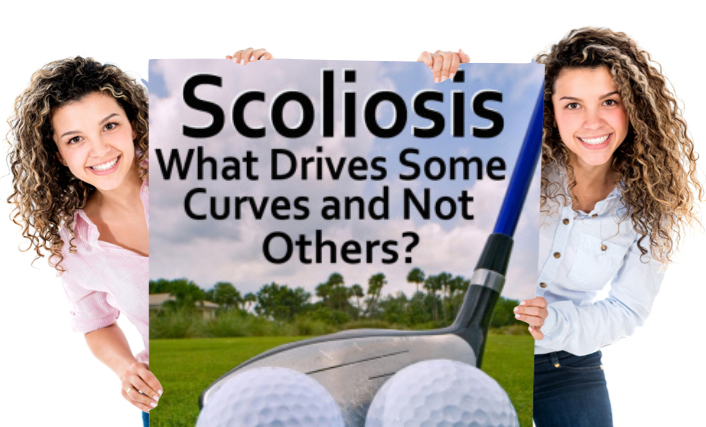It’s been well documented in the research literature that scoliosis has a strong genetic component. In fact, there is even a diagnostic test called Scolioscore that can identify the specific genes that are responsible for for scoliosis, but research studies on monozygotic (identical) twins with scoliosis show that often have varying degrees of curvature. In some cases, one may have a scoliosis and the other does not.
So if scoliosis is a genetic condition and both siblings have identical DNA why would one’s scoliosis get worse and not the other?
This question has puzzled doctors for decades. Although the answer is not entirely clear yet, modern medicine has found some very significant clues as to what drives one person’s scoliosis to progressively curve and not the others. While clearly genetics plays a role in many cases of scoliosis, it seems that other factors can contribute greatly to the progression of a scoliosis. The Science of Epigenetics is starting to shed light on why some scoliosis progress while others do not. Scoliosis examines the other factors.
What is Epigenetics
Epigenetics is the study of why inherited genes are expressed in some people and not others. It examines why the long-term alterations in the DNA’s transcriptional potential of a cell that are not always inherited.
Here is a great video by Paul Anderson who does avery good job of explaining the complexities of Epigenetics in an understandable manner.
Genetic Causes of Scoliosis
While the exact cause of the triggering factor in the onset of scoliosis remains somewhat of a mystery, a lot is known about the initiating factors. In most cases of scoliosis there is a genetic link that is caused the onset due to an aberration in the portion of the HOX genes called the HOX protiens that are called enhances are responsible for the expression or repression of genes.
When the abnormality in this gene is triggered it can result in a temporary imbalance of growth the plate on one side of the vertebra compared to the other.. This uneven growth from one side of a vertebra causing a slight wedging at that level, which leads to an imbalance of the spine causing that vertebra to be shifted laterally while also rotating away from the side of the defect.
Scoliosis occurs most commonly in pre-adolescent and teenage girls between the ages of 9 and 15 just before or right at the time of puberty when there is a major growth spurt and a significant hormonal shift that usher in profound changes to the body. The changing in hormones also appear to temporarily trigger the genes on one side of a particular vertebra to out pace the growth of the other side.
Genetics vs Epigenetics in Scoliosis
The Debate on Nature vs. Nurture
The studies on scoliosis in identical twins demonstrates that genetics alone cannot be not be solely responsible for it’s progression.
Other studies of certain sub-populations with no genetic connections can have a much higher incidents of scoliosis than the general population. Groups of people such as dancers and gymnasts have a much higher incidents of scoliosis than the general population. Some estimates indicate the incidents can be upwards of 10 times higher than in the rest of the population! This extreme deviation from the norm clearly indicates that there are other factors at play that are driving these particular particular sub-populations to have a much higher incidents of scoliosis.
Research studies have shown that girls who are participating in sports at a high level (i.e.: training for the Olympic Team or studying to be a Prima Ballerina) often have a delay in onset of menses that is contributed to reductions in sex hormones. It is theorized that this intensive physical activity signals the brain that the environmental conditions are too challenging to allow the females body to begin entering into a reproductive mode, thus delaying the onset of menses. Similar delays can be seen in malnourished girls as well as girls with anorexia.
Hormonal Imbalances Alone Are Not Likely the Sole Cause of Progression
When Struck By Puberty What Drives The Growth On One Side To Really Take Off, While The Other Side Does Not?
If hormones alone were the only initiating factor in scoliosis that would still not explain why the growth plate on one side of a vertebra would take off with rapid growth while the other one lagged behind.
Hormones are transported by blood thus do not have a propensity to be limited to only one side of the body and not the other. The only system of the body that has a separate dual system that could impact the body differently on the right and left is the nervous system.
How Could The Nervous System Trigger Imbalances in Bone Growth in the spine?
To this we must turn to the science of Neuroskeletal Biology for an explanation. Most people tend to think that bone growth is regulated primarily by genetics (parental influences) and to a lesser extent by nutrition, but research in this relatively new field of scientific study is showing that the nervous system is also responsible for modulating bone growth. The mechanism at play is through the brain center called the hypothalamus that directs the bone growth through the right and left side branches of the autonomic nervous system. The two branches of the autonomic nervous system (sympathetic and parasympathetic) can he likened to the gas pedal and brake on your car. In order to drive safely you need to properly apply both the gas (sympathetic) and the brake (parasympathetic).
It appears that both bone growth and remodeling are both influenced greatly by the brain. Sympathetic stimulation appears to stimulate osetoblastic activity and the parasympathetic stimulates osteoclastic activity. Imbalances in stimulation from right to left could explain why one side of the vertebra would grow more rapidly on one side as compared to the other.
Other studies suggest that in the scoliosis population there is a predominance in sympathetic stimulation. Although more research is needed, if this is indeed found to be a major driving factor in the development of scoliosis then this could lead to therapeutic interventions that could be prevent the onset.
Reducing Epigenetic Influences
Reducing other environmental factors that have a known negative impact on scoliosis progression could help reduce epigenetic influences.
Helping the spine move towards a more centered and balanced position can reduce the postural loads and lessen the proprioceptive load to the brain, thus reducing compensatory aberrant movements in the body that could trigger epigenetic changes. Such treatments as the dynamic SpineCor brace and Nu-Schroth work towards this end.
The nervous system also has a “righting mechanism” that demands the eyes stay at a horizontal level at all times. The postural muscles at the base of the skull will involuntarily move your head into position to maintain that horizontal balance. When something causes a disturbance of that balance they nervous system will make adjustments in the posture of the spine to accommodate the imbalances. This adaptation process by itself can cause the onset of a scoliosis.
Some of the promising areas of treatment that can greatly influence the epigenetics in scoliosis includes Stereotactic Cervical Alignment SCALE Method (aka – Altas Orthogonal), Vestibular Rehabilitation and Craniofacial Dentistry are all treatments that can have a beneficial effect on these types of mal-adaptations and thus, help reduce the neurological contribution to a scoliosis and possibly reducing its epigenetics effects.


Necesito saber su domicilio y teléfono para contactar con ustedes y saber si tienen un tratamiento para mi que tengo 21 años y padezco escoliosis con 2 curvas de mas de 50 grados
Estamos ubicados en Irvine California. Nuestro número de teléfono es (949) 525-4191.
Thank you Dr Diaz,
I received your email reply, I was finally able to download the Scoliosis Tx. Alternatives e-book I am very grateful (thank you for responding so quickly).
I am totally amazed, just thinking of the sheer numbers of individuals your educational outreach efforts have helped (both prospective patients & those already undergoing active tx. with Scoliosis Systems.)
I just want to be sure that you know how grateful I am for your help.
Thanks again,
Maddie (the active patient who contacted you about receiving the adult scoliosis e-book)
Maddie,
Thanks for the positive feedback!
When will the Cherry Hill office open?
Kathy,
I’m not sure. I would recommend calling (800) 943-1254 and and for Dr. Geeanopolis (just say Dr. G.) as he is the who is heading that up.
I have Scoliois for years my back hurts alot,now my right hip hurts so bad.What can I do please.Had surgure on my back,but it did not work.I am 75 years old.